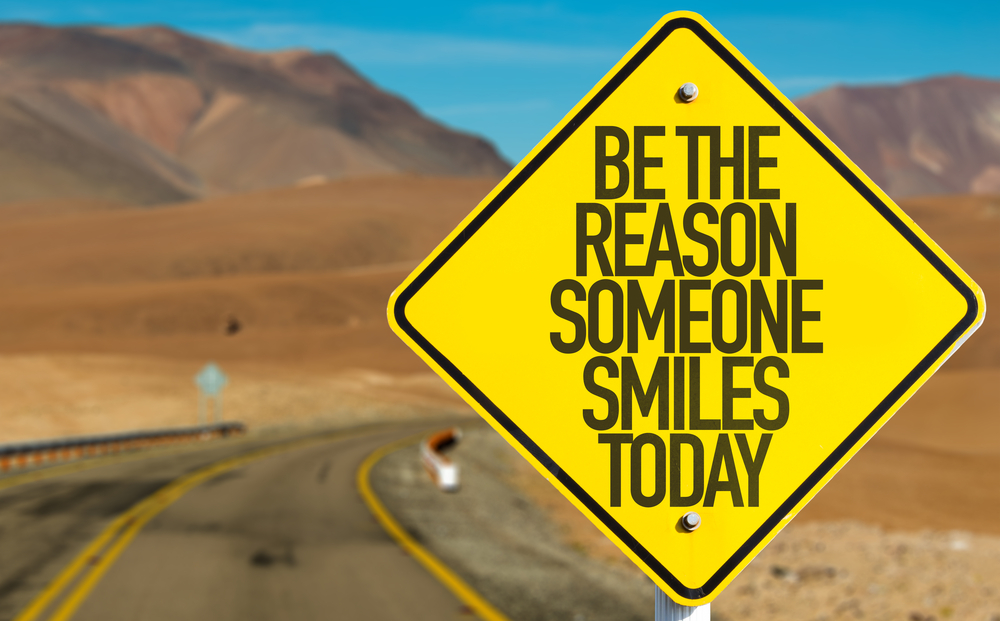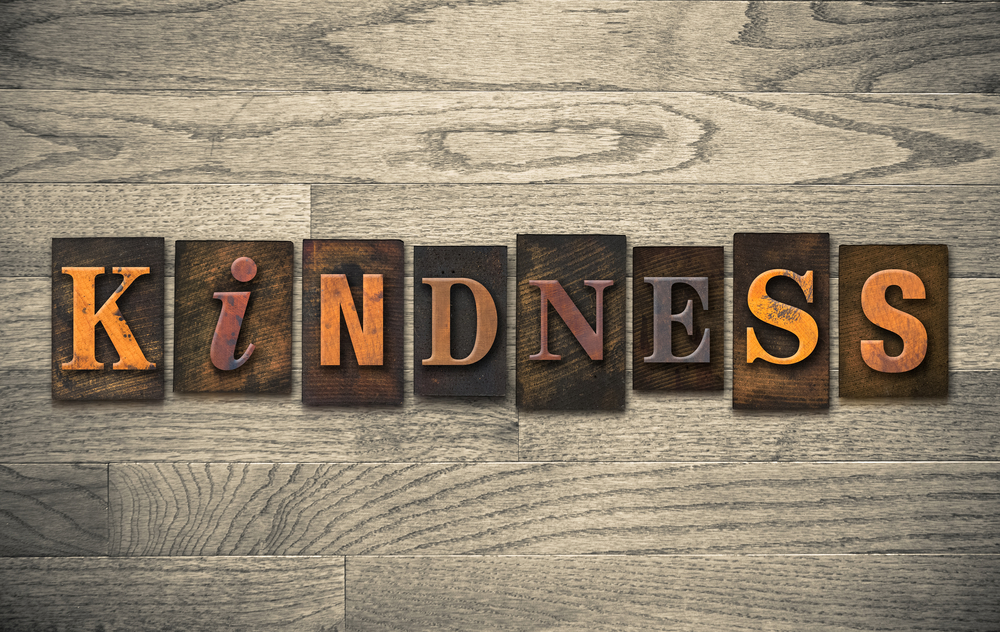Recently a post on LinkedIn about organizational culture and inclusion caught my attention – and got me thinking about the concept of micro-kindnesses in the workplace. To paraphrase, my LinkedIn connection said: “I sometimes worry that I’m not doing enough to effect the big, systemic changes necessary within my large corporate organization.”
By definition, systemic changes can’t happen quickly because there are often regulations, policies, and procedures that need to be changed to support the new direction. But what can we do in the meantime?
 This LinkedIn connection wisely noted that in addition to striving for those sweeping systemic changes, we all also have the ability to have a meaningful individual impact, even in small ways. I couldn’t agree more.
This LinkedIn connection wisely noted that in addition to striving for those sweeping systemic changes, we all also have the ability to have a meaningful individual impact, even in small ways. I couldn’t agree more.
For example, pre-pandemic and before the racial justice protests that started with the murder of George Floyd, I knew that one interaction at a time, one person at a time, and sometimes with groups of people, I could take actions that would improve organizational cultures and help people further develop their leadership. These were small things that I could do even in the absence of the systemic changes that are often needed. Providing support for inclusive mentorship and sponsorship programs, career coaching, executive coaching, and HR services that centre on human rights and finding ways for capable people to contribute within the workplace are all examples of what’s possible.
Based on what I’ve read and seen (too often) up close when workplace incivility is tolerated and left unchecked, it spreads like a wildfire.
Equally bad, rudeness, disrespect, discrimination, harassment, and bullying have countless consequences that all add up and have an impact on productivity and, ultimately, the bottom line. I feel so strongly about this that my book, How to be Resilient in Your Career: Facing up to Barriers at Work, published February 2023, dedicates several chapters to these issues and their consequences.
Although many organizations have evolved since March 2020, when the World Health Organization declared that we were experiencing a global pandemic and May 2020 when the racial justice protests started; most workplaces still have room for improvement and systemic changes.
While we’re waiting for policies and practices to improve, I am offering some suggestions that any well-intentioned person can put into practice. I call them micro-kindnesses. I’ll admit that these seem basic and simple. But sometimes in life, basic and simple are also wonderful and impactful.
Courtesy
 Simple courtesy, or being polite in terms of our attitude and behaviour toward others. We all know what it feels like when others are genuinely polite and friendly toward us, and most of us appreciate it. On the other hand, in some workplaces, courtesy is so rare that it may inspire suspicion. At the risk of oversimplifying, I’d argue that good manners are always a good choice. The worst that can happen is you’ll be accused of being “too nice.”
Simple courtesy, or being polite in terms of our attitude and behaviour toward others. We all know what it feels like when others are genuinely polite and friendly toward us, and most of us appreciate it. On the other hand, in some workplaces, courtesy is so rare that it may inspire suspicion. At the risk of oversimplifying, I’d argue that good manners are always a good choice. The worst that can happen is you’ll be accused of being “too nice.”
Cooperation & Collaboration
As children, we were taught that most tasks are easier when we work together. At work, this might be as simple as helping to fill in the blanks between what’s stated in formal reports, minutes, and official onboarding documents so that new colleagues can get up to speed faster.
Reliability & Integrity
Finding ways to consistently hold up our end of our work and advising others of potential delays in advance will go a long way. When we live long enough, we know how it feels when people don’t honour their commitments. We know it’s often terrible when people make promises that they don’t keep, when they miss deadlines, etc. and the tension it creates. On the other hand, when you find someone you can count on, it goes such a long way. Finding ways to consistently hold up our end of our work and advising others of potential delays in advance will go a long way toward a productive, well-functioning workplace.
Appreciation
Most of us know countless people within our work environments who routinely do great work. Yes, this is what they are paid to do, but are there opportunities to thank people for doing what they do? Are there times when we can acknowledge the positive impact that others have on our experiences at work? It could be someone whose editorial skills make you look smarter or some Excel genius whose talent prevents errors and saves countless hours when it comes time to report on results. Or it could be that person who is like the organizational glue that keeps things friendly and on track. There aren’t many awards presented for being the office Go-To, and yet how would we live without them? A simple “Thanks for all you do” is a micro-kindness that would make anyone’s day.
Inclusion and Belonging
If you’ve been reading my blog over the past ten years, you’ll notice that I’ve written a lot about inclusion and creating a sense of belonging at work. I believe this is at the core of a positive work environment, and when it’s missing, it is often a large part of what makes an organizational culture toxic.
At its core, inclusion is about engaging in behaviours that signal that everyone has value and recognizing everyone’s basic humanity. This means welcoming colleagues who may have different lived experiences (e.g., a different worldview linked to their Indigenous heritage, invisible or visible disability, a different gender, sexual orientation, skin colour, religion, etc.) but who are capable of contributing while at work.
 When our behaviour supports a true sense of belonging, and people are free to contribute to an organization’s goals without needing to allocate their precious intellectual, creative and emotional resources to self-protection, everyone wins. There are fewer distractions that compete for a person’s attention which means productivity is better. Fewer people feel obligated to leave a job in favour of a better workplace climate. Departures of this type are associated with a loss of corporate memory and increased costs tied to posting/advertising vacant roles, screening applicants, interviewing applicants, checking references, and onboarding.
When our behaviour supports a true sense of belonging, and people are free to contribute to an organization’s goals without needing to allocate their precious intellectual, creative and emotional resources to self-protection, everyone wins. There are fewer distractions that compete for a person’s attention which means productivity is better. Fewer people feel obligated to leave a job in favour of a better workplace climate. Departures of this type are associated with a loss of corporate memory and increased costs tied to posting/advertising vacant roles, screening applicants, interviewing applicants, checking references, and onboarding.
I’d argue that within organizations where micro-kindness is more common than microaggressions and other forms of cruelty, people can simply do their work rather than remain on guard for what negative/hurtful behaviour may be lurking around the corner.
There’s no limit to the number of micro-kindnesses we can include in our day-to-day lives while at work. Plus, with some intention and practice, incorporating these behaviours into our routines will become a habit. So much of the above really comes down to good communication. Sharing information and knowledge, sharing the status of a project or task may be micro-kindnesses, or much more. Many of these behaviours also support the development and maintenance of trust, which is especially important in hybrid workplaces.
So while we wait – or even fight — for big, systemic changes, which often require courageous and bold leadership, let’s see what we can each do to make our time spent at work more pleasant and more productive for everyone in the workplace.
Did this article spark any career, leadership, or training related questions, ideas, or concerns?
Reach out today for a free and confidential initial consultation by phone, email, or via direct message on Twitter, Facebook or LinkedIn.
More than career coaching, it’s career psychology®.
I/O Advisory Services Inc. – Building Resilient Careers and Organizations TM.
Addendums – (1) About one month after I published this blog, the Harvard Business Review published “An Antidote to Microaggressions? Microvalidations.” that makes similar arguements. It’s worth reading! (2) In March 2024, this Globe and Mail article, Kindness isn’t weakness in leadership, was published, and (3) In October 2024, the American Psychological Association reported that kindness toward others can boost our own physical and mental health.



